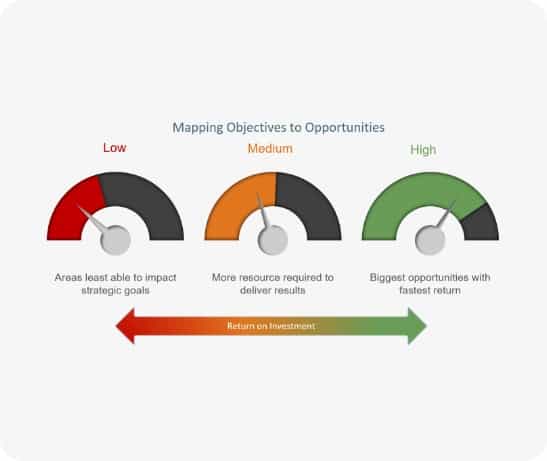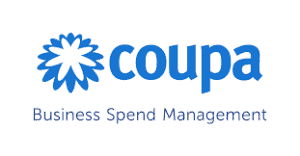Building a business case for outsourcing Utility Bill Management may be challenging to quantify or articulate to stakeholders, so in this article, we examine the commercial and operational benefits of utility bill processing solutions and address the typical misnomers associated with the program.
Resources
It is an important consideration for the business case to understand your current cost to deliver this service.
In most organizations, processing utility bills are part of the core functions of the accounts payable (AP) team, whose primary role, after all, is to evaluate invoice legitimacy, validate charges, and process payments as they do for many other business purchases. However, for utilities, and energy, in particular, a light touch on validation can be costly as this is where overcharges and billing errors are missed. On the other hand, a deeper dive into consumptions or unit costs will typically require more specialist knowledge and sophisticated tools. If the number of invoices being processed is low, AP can normally manage, but once the number of monthly invoices grows larger (200+/month), the cost-benefit of continuing to manage internally rapidly diminishes.
For companies with large or medium-sized estates, utility bill processing, validation, and payment quickly become some of the most time-consuming areas for AP departments, who find themselves needing to become utility and facilities experts if queries arise or accounts need to be opened or closed. The time required for such tasks rapidly eats into the short payment timelines afforded by utility companies who typically offer just fifteen days of invoice issue before applying late fees.
As an organization grows, so does the problem of managing the utility bills. With most facilities having, on average four utility accounts (electric, natural gas, water, sewer, trash, or telecoms being the most common) any increase in the number of locations has an immediate impact on the resource requirement from the AP team.
Processing Cost
While outsourcing is widely recognized as an effective way to manage many non-core tasks like janitorial services, facilities management, or building security, paying utility bills can be one of the last areas to be addressed.
In 2020, after a huge shift in operational behaviors brought on by the global pandemic, companies started to re-evaluate what was core to their business operations and in this case, their AP teams were also scrutinized. They concluded that they of course need to retain control of payments, but turning the handle to process them, not so much. In many sectors revenues were declining rapidly, so finding cost efficiencies and avoiding overspend had never been more important.
A few short years ago, an independent survey of almost 1000 companies into AP processing cost conducted by CFO.com, found that 75% of companies processing their own invoices had a cost of between $7.75 and $12.44 an invoice. This does not account for the cost of late fees, resolving queries, disconnections, or funding charges.
Vervantis, as a comparison, can reduce this cost by up to 80% with a process that sees late fees and disconnections practically eliminated. These are metrics you should use as you are building the business case as well as highlighting the detailed validation of invoice charges and consumptions.
Value Drivers
As you begin to build your business case, understanding as many value drivers as possible is important, as some fall outside of what we describe as hard dollar savings, as while they increase efficiency and accuracy the value is hidden but should be recognized non-the-less. For example, program visibility through our proprietary software not only speeds up the AP process, but it also provides a level of insight into consumption, cost, overspend, facility benchmarks, budgets, and the impact caused by weather or forecast price increases.
Below are highlights of areas in which the Vervantis utility bill management process will bring value, which you may wish to consider as you are building the business case.
Cost Avoidance
Outsourcing can deliver a considerably lower cost to serve than your internal blended rate of resource. According to a survey of 1000 companies by CFO.com, Seventy-five percent (75%) of companies have an internal invoice processing cost of between *$7.75 & $12.44, and this is just to process and pay, not validate and resolve issues. Vervantis, by comparison, can save up to 80% of this cost and free more expensive internal resources to focus on more value generative areas.
*This metric was calculated using the total cost to process accounts payable and includes labor, systems, outsourcing, overhead, and other AP process costs. This metric is calculated by dividing the total cost to process AP by the total number of invoices processed by the business entity.
Validation
Utility bills are complex, where many individual charging elements and line items make up the final bill. Vervantis gathers 100% of this line item data and runs sophisticated algorithms to evaluate invoices which include rate classes, contract rates, consumptions, and so on. Here are the top ten areas we check:
- Prior Balance. The previous balance is reviewed against the prior payment history.
- Two Bills for the Same Service. A test is run to locate any previously processed invoice for the same service to date.
- Missed consumption period. A check is performed to ensure a billing period hasn’t been skipped.
- Meter Read Dates Out of Sequence. A check is run to compare the meter read the date of the current bill to that of the prior bill.
- New, Deleted, or Modified Meter. The system determines a new, deleted, or modified meter by comparing the present meter count to the previous meter count. If counts do not sequence, an exception record is generated.
- Bill Total Amount Doesn’t Match Sum of Line Items. Bill Total amount is compared to Bill Charges Subtotal. If a discrepancy, an exception is generated and resolved.
- Utility Vendor Not Recognized. The vendor submitting the invoice must match the vendor shown in our clients’ Utility Account Database.
- Utility Account Number Not Recognized. The Utility Account Number is validated to our clients’ Utility Account database.
- Late Fees on Bill. All late fees on invoices are investigated and cause identified. If a late fee is attributable to Vendor error, the waiver of fees is automatically pursued.
- Date Field Validation. The Invoice Service Period and Due Dates are checked to ensure realistic fields compared to the current date and relation to each other.
We are continually carrying out checks to identify billing errors and anomalies with periodic reviews of bills and accounts. When errors are found we file claims with the utility companies and do all the necessary follow-up to obtain refunds.
Variance Testing
We work closely with our clients to establish appropriate variance levels so that potential errors are quickly identified that include overspend or consumption anomalies. The utility bill management service automatically generates exceptions to be investigated prior to payment authorization. These are managed by Vervantis billing specialists who work directly with utility vendors and client facility managers to quickly resolve, typically within 24hrs, minimizing any potential disruption. Every exception and resolution is ticketed and tracked and visible in our utility bill management software further streamlining the role of AP teams.
The variance test tolerance limits are user-definable and applied at the utility account level. Invoices failing bill audit variance tests are put on hold and researched. Following research, bills are released to be paid as billed, adjusted if required, or rejected.
- Cost per month
- Consumption per month
- Cost per unit consumed
- Demand
- Power Factor
- Cost per day
- Consumption per day
Assurance
Processing invoices accurately and timely is imperative if late fees or supply disruptions are to be avoided. Our clients typically see an 85% reduction in late fees in the first 90 days of service, and if we fail in our obligations and a late fee is incurred, we have a late fee guarantee which provides financial compensation. In addition, a third level of checking to identify billing errors and anomalies, a periodic review of bills and accounts using analytical reports available in the system? When errors are found do you file claims with the utility companies and do the necessary follow-up to obtain a refund credit or check
Continuity
Disconnections and shut-offs can be costly to the bottom line and reputation. Our fast invoice processing combined with a first due, first, through validation and payment process, means late fees are rare and disconnections even rarer. In addition, our team proactively chases invoices if they fail to arrive for processing at the expected time to meet the normal payment deadlines, which again avoids the chance of added charges or shut-offs.
Data Accuracy
Vervantis captures one hundred percent (100%) of line item data from utility invoices allowing over eighty reports to be produced right out of the box. All data is securely stored and available to be downloaded in several formats together with pdfs of the invoices. As well as a wealth of standard reports, we provide account-level budgets, accrual reports, consumption reports, and detailed monthly benchmarking reports which are all readily available.
Greater Efficiency
- Faster processing, typically 48 hours from invoice arrival to funding file.
- More Secure – All funds are deposited to a secure banking portal.
- 100% of utility invoices validated
- 100% of administration handled by utility experts – account open/close and exception resolutions
- Deploys a dedicated scalable team of utility specialists with 100% visibility into charges and approval channels
- Independent attestation of data and process security (Vervantis is SOC 2 Type 2 Compliant)
- Proactive chase of missing bills before the due date
Quality Control
Standard checks and balances have been built into the Utility Bill Payment and Management Reporting platform. These processes ensure the integrity of the information being captured for our clients and verify the accuracy of data being entered. Our utility bill processing and payment solution is SOC1 Type 2 certified and Vervantis as a whole is SOC2 Type2 certified, providing further peace of mind that our processes are robust, your data is secure and we are a company to be trusted.
Summary
We hope this article provides a starting point to help you quantify the tangible and intangible benefits of a utility bill management program as you begin building the business case.
In short, if you’re processing more than 150 utility invoices a month, outsourcing to our UBM solution should eliminate disconnections, reduce late fees, lower your processing cost, improve your AP process and free up resources.
For more information, a software demonstration, proposal, or simply a quick chat with our specialists, please don’t hesitate to reach out to our team – you can contact us here.











